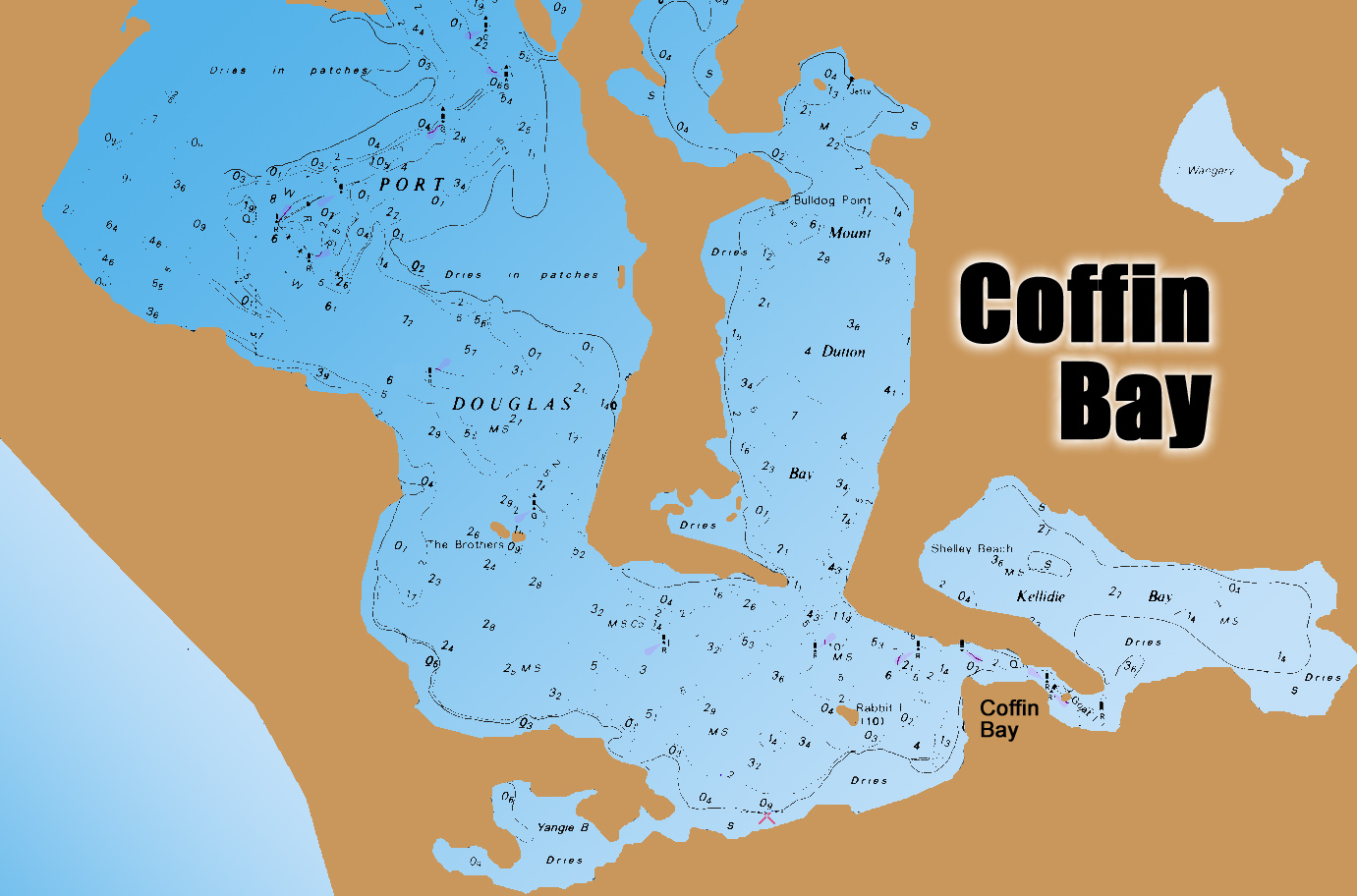

Coffin Bay is one of South Australia’s great fishing locations.
The area has sheltered tidal areas ideal for trailerboaters and yakkers, with deep offshore reefs accessible to those with bigger boats, along with several islands.
There are surf beaches and other landbased spots to the north and south.
The fishable area is huge, with good boating facilities at the township despite it being inhabited by fewer than 1000 permanent residents.
The offshore waters offer exciting fishing for tuna, samson, kingfish, snapper, morwong, nannygai and more.
Most holiday fishos target the inshore waters, with king george whiting the main species sought.
The KGs are usually found on the edges of weedbeds out of the main current of the deeper channel areas.
One of the best whiting areas is out of Farm Beach, at the Coffin Bay entrance.
To reach this area skippers can beach-launch at Farm Beach, or make a 15km run from the town ramp.
Whiting can be caught from shore at times. The boat ramp area, and the ledge opposite the township, are as good as anywhere, and the shoreline at Mt Dutton Bay.
Winter is arguably the best time for chasing whiting.
Garfish and tommy ruff respond well to berley in summer.
A highlight of the area is a spring run of big yellowtail kingfish that move into shallow Kellidie Bay.
These fish can be targeted in small boats and sight fishing is possible, one of the state’s fishing highlights.
Snapper are caught within the bay in the channel and other deeper spots, but the water is very clear and light tackle and fresh bait is a must. Fishing at night improves your chances.
The Coffin Bay peninsula is 40km in length but conventional vehicles can only go as far as Yangi Bay. From there you need 4WD and sand driving ability.
On the western side of the peninsula Gunyah and Almonta Beaches produce salmon. The sand is soft, so take a compressor and deflate your tyres. Winter fishing is best, but summer produces salmon at times.
The east side of the peninsula has small beaches and points that produce whiting, garfish, silver trevally and small salmon. Try Black Springs, Seasick Bay and Point Sir Issacs.
There are several campgrounds in the national park.
The coast between Point Sir Isaacs and Whidbey Point is not accessible by vehicle but can be reached by fit fishos on foot. The rocks produce better-than-usual fish, including whiting, sweep, nannygai, blue groper and snapper.
From February to April, tuna feed near Point Whidbey.
Outside the bay, for those with suitable boats, and a window in the weather, nannygai, morwong and snapper are caught on the deeper reefs near Sir Isaacs and north to Coles Point. Most of the reefs are to 35m depth.
Out wider, from January to April, southern bluefin tuna are caught. The schools start from around Whidbey Point, buty the best grounds are around Four Hummocks, Greenly Island and Rocky Island. Expect fish of 10kg to 20kg. .
The deep reefs around Greenly Island have kingfish and samson but rarely produce snapper. These reefs rise from 80m to about 40m.
For families, fishing the Coffin Bay shallows for silver trevally, flathead, snook, squid and flounder is fun and offers relative safety.
For those with 4WD vehicles, beach launching is possible at the southern end of Avoid Bay.
North of Coffin Bay there is rock and surf fishing at Coles Point, Greenly Beach, Convention Beach and Drummond Point.
Coffin Bay is famous for its oysters, and finding a feed of southern rock lobster is usually easy enough when the weather is suitable.
Beware breaking waves around shallow reefs when fishing outside of the sheltered waters.
A series of markers provide boaters with the best path to navigate in and out of the Coffin Bay “port”.
If there is a downside to fishing this region, it is that – if you are bait fishing – you will be pestered by endless rays and crabs.
Here is a list of recommended tackle for SA waters.
Here is the SA seasonal fishing calendar for various fish species.
GPS marks in WGS84
Greenly Island North
34° 36.667S
134° 49.445E
Greenly Island East
34° 35.227S
134° 57.735E
Whidbey Point Wide
34° 36.341S
135° 02.897E
Perforated Island North
34° 41.660S
135° 09.729E
Perforated Island North
34° 41.029S
135° 07.365E
Sir Isaac Wide
34° 22.767S
135° 01.054E
SA fishing map
Coffin Bay tides
SA fishing regulations
SA marine parks
NOTE: Special snapper rules apply in South Australia – more info here.
Email corrections, additions, pictures or video here.
